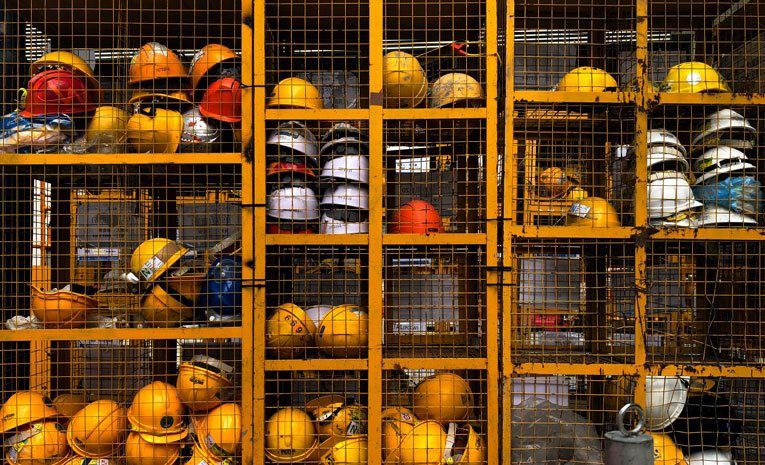Our guide to health and safety at work
2 Jul 2020

Employers are responsible for the health and safety of their employees as well as members of the public in their workplace. Keeping everyone who steps foot into the workplace safe is crucial, which is why there are a number of duties that all employers must adhere to.
These duties have been written up under the Health and Safety at Work Act 1974 (also known as HASAWA and the HSW Act) to keep workplaces safe and workers protected. They apply to all businesses regardless or whether you’re an employer or self-employed.
This article covers
Health and safety legislation
The HSW Act is the primary piece of legislation covering health and safety in the workplace. It sets out the general duties that employers have to protect the health, safety, and welfare of their employees and workplace visitors.
The Act requires employers to do whatever is practicably reasonable to achieve this. It also outlines the duties that employees have to themselves and each other. The Health and Safety Executive (HSE) was set up to enforce the provisions of the Act and ensure employers are keeping to their responsibilities.
There are various regulations that sit beneath the HSW Act.
These regulations provide more specific duties around particular hazards. Some of the principal regulations include:
- The Management of Health and Safety at Work Regulations 1999. The main provisions include appointing a “competent person” to manage health and safety in the workplace, carrying out risk assessments to identify hazards and manage risks, providing workers with training on safe working practices, and providing a written health and safety policy.
- The Workplace (Health, Safety and Welfare) Regulations 1992. This requires employers to provide a safe working environment by ensuring the workplace has adequate lighting, heating, ventilation and workspaces, facilities including toilets and refreshments, and safe passageways.
- The Health and Safety (Display Screen Equipment) Regulations 1992. This covers workers who regularly use computers as part of their job. Employers are required to undertake workstation assessments, ensure staff take regular breaks, provide regular eye tests for employees, and provide adjustable furniture.
- Other regulations enforced by the HSE. There are over 100 different sets of regulations that apply to different industries. For example, construction workers need to adhere to the CDM regulations, while businesses that handle hazardous substances need to apply the COSHH regulations.
What are your health and safety responsibilities?
In addition to any relevant regulations, the HSW Act provides employers with general health and safety responsibilities. The rules you need to follow depend on the size of your business and the industry you operate in. Some of the principal rules in the HSW Act that you may be required to follow include:
- Providing a safe system of work.
- Providing a safe place of work. This includes the maintenance of safe passageways.
- Ensuring any machinery or equipment is safe to use.
- Ensuring that all materials are stored, handled, and used safely.
- Appointing a ‘competent person’ to manage health and safety in your business.
- Carrying out risk assessments and taking steps to control any risks identified.
- Ensuring adequate welfare provisions are made for staff.
- Communicating with workplace safety representatives.
- Providing employees with appropriate health and safety training.
Do employees have health and safety responsibilities?
Most health and safety responsibilities fall on the shoulders of employers, but employees have some duties too. Under the HSW Act, workers have a duty to take care of their own health and safety and that of others who may be affected by their actions at work.
Employees need to cooperate with their employers and co-workers to help everyone meet their legal obligations.
Do I need a health and safety policy?
A health and safety policy lays out how you will manage and control risks in your business. It details who in your company is responsible for what areas of health and safety policy.
You only need a written health and safety policy if you have five or more employees. If you have fewer than five employees you don’t need to write anything down but it’s still useful to do so.
The HSE has a useful template for preparing a health and safety policy here.
Do I need to do a risk assessment?
All businesses should think about what hazards could cause harm to people in the workplace and what reasonable measures can be used to prevent that harm. You should consider how accidents could happen and concentrate on real risks, i.e. those that are most likely to cause harm.
If you have five or more employees, you will need to make a record of any significant findings from a risk assessment. Businesses with fewer than five workers don’t have to write anything down.
Health and safety training
The HSW Act requires businesses to provide their employees with adequate instruction and training to ensure, so far as is reasonably practicable, their health and safety at work.
There are many ways to train your workforce in health and safety law and regulation from on-the-job training to classroom training and distance learning courses.
Health and safety matters
Health and safety measures are crucial for keeping your workers healthy and your workplace safe. While it may be the case that large employers have additional duties under the HSW Act, health and safety laws apply to all businesses, regardless of size.


